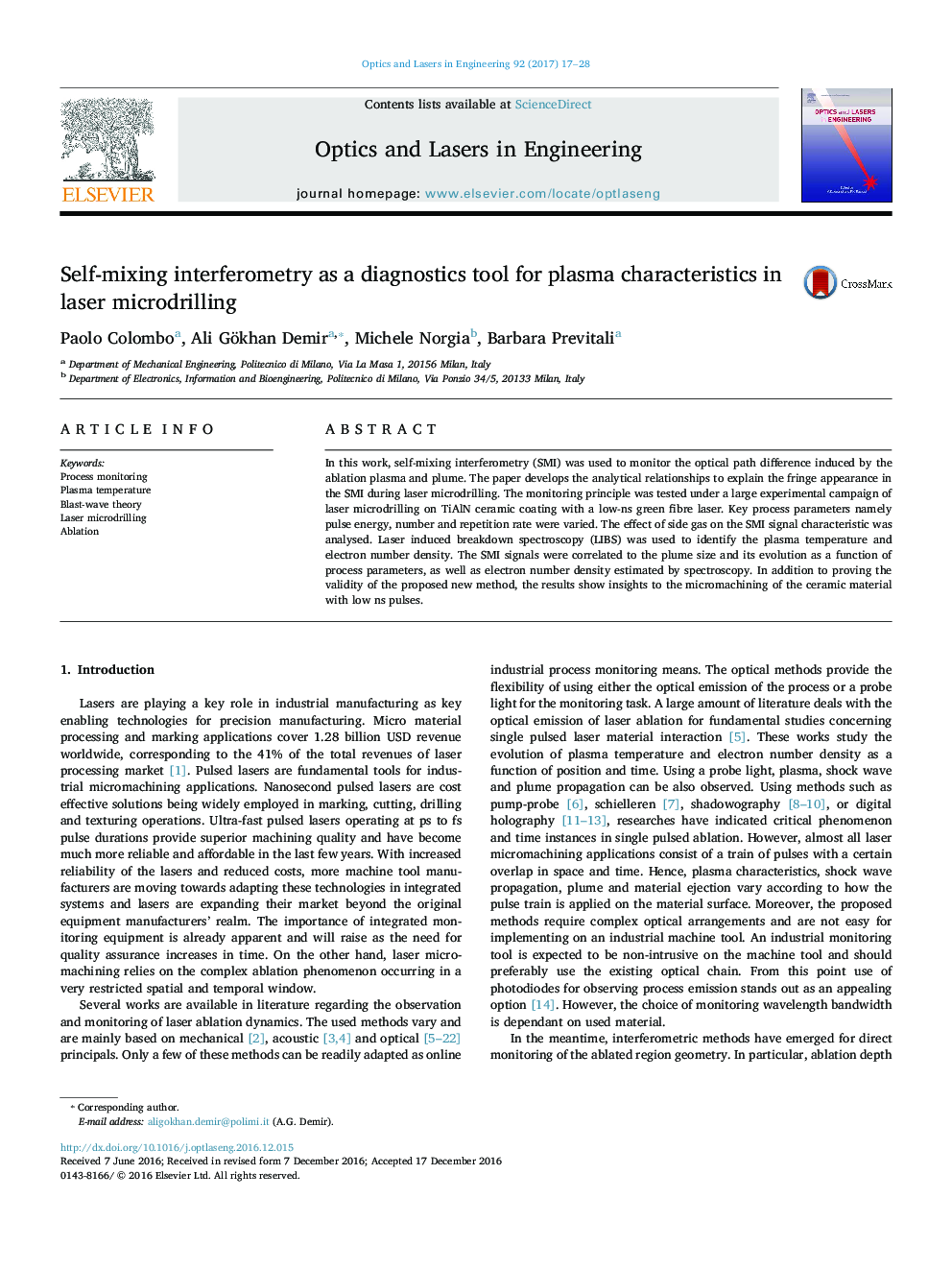| Article ID | Journal | Published Year | Pages | File Type |
|---|---|---|---|---|
| 5007843 | Optics and Lasers in Engineering | 2017 | 12 Pages |
Abstract
In this work, self-mixing interferometry (SMI) was used to monitor the optical path difference induced by the ablation plasma and plume. The paper develops the analytical relationships to explain the fringe appearance in the SMI during laser microdrilling. The monitoring principle was tested under a large experimental campaign of laser microdrilling on TiAlN ceramic coating with a low-ns green fibre laser. Key process parameters namely pulse energy, number and repetition rate were varied. The effect of side gas on the SMI signal characteristic was analysed. Laser induced breakdown spectroscopy (LIBS) was used to identify the plasma temperature and electron number density. The SMI signals were correlated to the plume size and its evolution as a function of process parameters, as well as electron number density estimated by spectroscopy. In addition to proving the validity of the proposed new method, the results show insights to the micromachining of the ceramic material with low ns pulses.
Related Topics
Physical Sciences and Engineering
Engineering
Electrical and Electronic Engineering
Authors
Paolo Colombo, Ali Gökhan Demir, Michele Norgia, Barbara Previtali,
